VETIVER NEWSLETTER — MAY 2023
NEWS UPDATE
 A lot of hard work is going into the organization of ICV7 that starts on May 29th. We must thank in advance Mrs. Nongpun Meechuen for the extraordinary effort that she and her team made in arranging the conference. Also Paul Truong (TVNI) for collating the papers and advising on such matters – a lot of work in that area. There are some very interesting and useful papers to be presented. They all need careful consideration as they all contain information of relevance for future upscaling of VGT – even the smallest nugget of information can sometimes unlock something bigger or add to understanding how a particular aspect of vetiver functions. Here is the updated schedule for the conference. Conference papers and presentations will be available to the public on TVNI and Thai websites after the conference. The ICV7 logo shown here was the inspiration of Mr. Pawat Nawamarat, the Secretary General of the Office of the Royal Projects Development Board of Thailand. The logo showsvetiver grass in the middle, spreading their roots to enhance the soil in five continents (represented by five brown lines). Vetiver also makes the water abundant, represented by the circle of water in the shape of a globe.
A lot of hard work is going into the organization of ICV7 that starts on May 29th. We must thank in advance Mrs. Nongpun Meechuen for the extraordinary effort that she and her team made in arranging the conference. Also Paul Truong (TVNI) for collating the papers and advising on such matters – a lot of work in that area. There are some very interesting and useful papers to be presented. They all need careful consideration as they all contain information of relevance for future upscaling of VGT – even the smallest nugget of information can sometimes unlock something bigger or add to understanding how a particular aspect of vetiver functions. Here is the updated schedule for the conference. Conference papers and presentations will be available to the public on TVNI and Thai websites after the conference. The ICV7 logo shown here was the inspiration of Mr. Pawat Nawamarat, the Secretary General of the Office of the Royal Projects Development Board of Thailand. The logo showsvetiver grass in the middle, spreading their roots to enhance the soil in five continents (represented by five brown lines). Vetiver also makes the water abundant, represented by the circle of water in the shape of a globe.
Note: The June edition of this Newsletter will be produced by Jim Smyle with a focus on the highlights of ICV7.
THE PERFECT VETIVER HEDGE
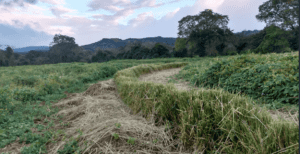
Now and then it is a good thing to remind ourselves of what this unique plant can do, and the benefits that derive from it. A vetiver hedge when functioning perfectly (optimizing soil (erosion control) and water conservation, properly maintained, and with leaves cut for mulching or other purposes), should look like these hedges in photos by Antonio Carrillo Bolea of Mexico. These hedges are on the contour and planted without earth walls, ditches, or other impediments in front or behind them. Compared with engineered structures these hedges, apart from significantly reducing soil loss and rainfall runoff, sequester large amounts of atmospheric carbon dioxide converting it to soil organic carbon stored deep in the soil profile; they provide habitat for beneficial insects and other fauna; they act as a dead end trap crop for some crop pests; they retain and remove toxic agricultural chemicals that might otherwise end up polluting downstream water; they improve ground water recharge , they penetrate and break-up soil hard pans and enhance the regeneration of soils through adding organic matter, and increase and evenly distribute soil moisture. Additionally they build up, over time, natural terraces that result in up-slope slope reduction which further reduces the velocity of rainfall runoff and improves infiltration. These are just a few of this plant’s many agricultural and sustainable land
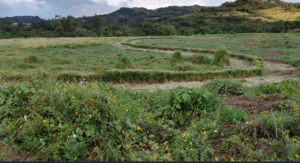
management benefits that, besides increased crop yields — the latter can be substantial, should be taken into account when undertaking economic cost benefit analysis and comparison between other Sustainable Land Management practices. When grown as a high yielding industrial field crop its products include oil from its roots (perfume, medicinal), and a huge biomass from its leaves that could be used for ethanol and other bio-energy products.
CLIMATE SMART CREDIT.
These two graphics summarize the process of a Climate Smart Credit credit program developed by F3 Life Corporation Ltd in Kenya where grass strips are a key component. Note the grass strips in this program are said to be vetiver .. see this video and F3 Life website .
The use of vetiver hedgerows under programs like this can help protect the farmer and the loan agency in the event of extreme weather conditions and forms part of the land management agreement between lender and borrower. I suspect that organizations like F3 Life might need some professional assistance in improving the quality of the grass strip intervention. Other organizations like the “One Acre Fund”, “Farm Africa”, might also benefit from introducing VGT to help protect their investment in farmers against extreme weather events.
AGRICULTURE WORLD – magazine
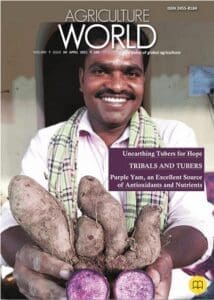
“India’s monthly “AGRICULTURE WORLD” magazine – “KRISHI JAGRAN is the largest circulated rural family magazine in India. The reason behind its prodigious presence is that it comes in 12 languages – (Hindi, Punjabi, Gujarati, Marathi, Kannada, Telugu, Bengali, Assamese, Odia, Tamil, Malayalam and English), 23 editions, 1 million plus circulation & reaches 22 Indian states. Krishijagran.com has 2 Portals, in English and Hindi, that provide online information on Agriculture, post-harvest management, livestock, farm mechanization, crop advisory, updates on agriculture sector, events and market prices”. – Mamta Jain CEO — AW
Agriculture World management invited our vetiver colleagues in India, led by CK Ashok Kumar, to work with the magazine to produce a special edition dedicated to Vetiver Grass Technology to be published at the time of ICV7. To help accomplish this, the magazine set up an information and discussion forum to gather facts on VGT from India and elsewhere. Quickly, feedback and old faces showed up, and a slew of ideas and information was created for the magazine editors. I am hoping that once this special Vetiver edition is published that Agriculture World continues a vetiver forum of some kind or other with the objective of promoting , informing, and exchanging views on all aspects of vetiver applications. There is I believe a quite a lot of activity and interest in India – it needs a voice! Vetiver could do much for India in meeting her UN Sustainable Development Goals, as could each individual user of the technology.
SUSTAINABLE LAND MANAGEMENT
Continuing the theme of some of the previous newsletters I share below three items of interest
Regenerative agriculture and food forest
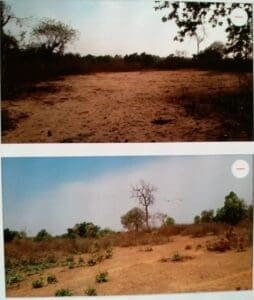
“I am sharing some photos so that you can see the power of “no-till” farming. This is a 16-month-old “no-till” multi-layer food forest… started in May 2022 with guidance, inspiration and encouragement from Bhaiya Patanjali (Vanya Farms Madhya Pradesh) … The land was completely degraded and unused for the last 8-10 years. The topsoil had mostly washed off and the trees have been cut and removed by the locals. The soil was highly compacted, and it took a huge effort to dig the holes for the trees. It was a picture of brown and black due to constant forest fires.
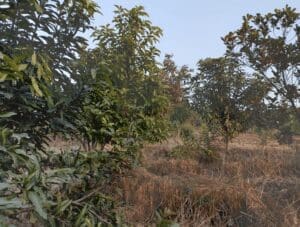
Just 16 months later!!! Multilayers of agastya, mahua, moringa, mango, jamun, cherry, yellow and black turmeric, ambadi, vetiver, lemon grass, papaya, banana, tulsi, pepper, paan, colocasia, ajwain, hibiscus, amla, tur, pineapple, bamboo, passion fruits, pipli and many more. The agastya trees you see are 25-30 feet tall in just 16 months, giving shade, nitrogen and mulch. The banana trees are all desi varieties Rasabelle, nendran, elakki, fruiting vigorously within one year. Vetiver has been the biggest catalyst I think … in decompacting and enriching the soil. Every inch of the soil is covered with mulch… now we are getting mulch from the trees themselves. And all this without a drop of pesticides, herbicides, fertilizers etc. of any type – chemical or organic.

I must say I am as surprised as my fellow villagers… not that it happened – but that it happened so quickly. Nature is healing itself and healing all of us. Only because we stopped messing around with her. So grateful to Bhaiya Patanjal for all the guidance and encouragement. We have to bring vetiver center stage for fighting climate change for its properties of cooling mother earth, recharging and purification of water, holding soil and moisture, and as a biofuel ……. Our regenerative farm with vetiver as base meets 15 of the 17 Social Development Goals set by UN. … We have many “no-till” farmers who follow our methods. This humble grass can help reverse global warming, it is the biggest carbon sequester, great for mulch. In our “no till” there is no poison. Instead a multilayer permanent food forest, vetiver is key … Perhaps we have to bring vetiver center stage for fighting climate change for its properties of cooling mother earth, recharging and purification of water, holding soil and moisture, and leaves of vetiver could be a brilliant source for aviation fuel, marine fuel, cbg, 2g, biofuel; the resultant residue is organic fertilizer which goes back to soil, a perfect circular economy. Our regenerative farm with vetiver as base meets 15 of the 17 Social Development Goals set by UN”.
Rehabilitation of extreme degraded land in India
“In 1956 (nearly 70 years ago), the National Botanic Gardens (NBG) in Lucknow initiated what seemed a pointless endeavor: a major effort to reclaim a patch of usar soils. These soils, which cover nearly 7 million hectares of India, are so alkaline and salty that they have long been classified as unfit for agriculture.
However, the director of the NBG, K.N. Kaul, decided to tackle the impossible. He began his project around the village of Banthra (just outside Lucknow, on the Kanpur Road), where many hectares of usar soil had been lying unused for years.
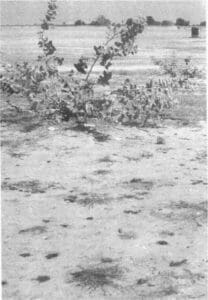
To those who saw the area, the prospect of producing anything useful appeared bleak. The soil was bare, hard, and highly eroded. Hard pans had surfaced in places, and a thick crust of sodium clay stretched as far as the eye could see. The alkalinity was extreme (as high as pH 11) and just 1 m below the surface was an impermeable layer of calcium carbonate that blocked plant roots and produced widespread waterlogging in the monsoon season. The only vegetation to be seen was sparse clumps of grasses and isolated specimens of the weed with its salt-filled bladders and toxic leaves.
Administrators from the state government felt that this experiment, like all the previous ones on usar soil, was bound to fail. They gladly made the site available without charge. After all, what had they to lose? The people of Banthra were living in utter poverty, and many had resorted to crime to survive. Even the Banthra people themselves were less than enthusiastic, convinced that cultivating such hard and barren land would demand tractors, bulldozers, subsoilers, rollers, and other heavy machinery. They could foresee only big costs and small rewards.
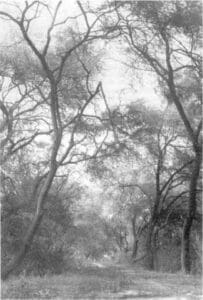
However, they soon found that things were to be different. Professor Kaul planned to employ not machinery, but organic amendments and natural methods. His goal was to create a self-sustaining agriculture based on alkali-tolerant herbs, shrubs, and trees. It seemed a good idea, but at first nothing would grow at Banthra. Even the most resilient food crops died of stress and exposure. This project certainly seemed to be the failure everyone had predicted.
But then everything changed, and it was vetiver that made the difference. This rugged grass possessed an exceptional ability to withstand the heat, the drought, the salt, the alkalinity, and the waterlogging. Without even amendments or fertilizers, it could establish itself when planted directly into the usar concretion.
Even the researchers involved in the project find it hard to credit the transformation that occurred at the village of Banthra.
And vetiver did much more. As was later discovered in Louisiana, it proved to be a “first aid” plant that started the process of healing the site. Vetiver stretching in rows across the land gave other plants a chance to survive, too. It blocked the drying winds and reduced the erosion they caused. Indeed, the better microclimate and environment between the rows helped the NBG researchers establish a workable farming system. In the process, the soil began slowly to improve. This
Their skepticism seemed justified: prospects for working with such land were bleak. Iron nodules were prominent in the soil profile, drainage was poor, alkalization was severe, the water table was at 4–5 m below the surface, pH was 8.5–11.0, electric conductivity (at 15 cm depth) was 0.7 m mhos per cm, and exchangeable sodium ranged between 40 and 73 percent. In addition, the average organic carbon was only 0.2 percent, available phosphorus 7.9 kg per hectare, and potassium 300 kg per hectare.
Vetiver made this possible. Its ability to survive the alkalinity and harshness of these degraded plains provided an initial plant cover that helped stabilize the land. The vetiver rows reduced the excessive effects of wind and sun and erosion, and other plants could then be established as well. In 20 years, a remarkably short time, this stable forest resulted.
The land at Banthra is almost flat, and Professor Kaul initially thought of vetiver not as an erosion-control barrier but as a potential commercial crop. The villagers could sell the roots for essential oil, he thought. Nonetheless, the outcome exemplifies the plant’s ability to survive adversity and to foster the growth of relatively less tolerant species.
That is certainly what happened at Banthra. Today it is a lovely parkland: green, shady, and beautiful. Legumes of various types now flourish, and 18 species of plants (belonging to 15 families) that had not been recorded there at the time Professor Kaul began his work are now common. The land has been transformed. It now supports a healthy mix of woodland, grassland, and cropland. As the leader of the project at the time stated with relief, “The final proof came with the accumulation of humus and eventually with the appearance of earthworms. Although this took 12–15 years, it was a good reward for the efforts we had started in the mid-’50s with ‘first-aid’ species like vetiver. This was indeed a day of rejoicing for us all.”
Extract from National Academies of Sciences, Engineering, and Medicine. 1993. Vetiver Grass: A Thin Green Line Against Erosion. Washington, DC: The National Academies Press. https://doi.org/10.17226/2077 Dr Rattan Lal, World Food Prize laureate and keynote speaker at ICV7 was a member of the panel that review the potential of Vetiver Grass. I think you will find that in the interim his positive views of the technology has strenthened.
Rehabilitation and expansion of 80 year old vetiver hedgerows in St Vincent and the Grenadines
Vonnie Roudette – community leader and activist.
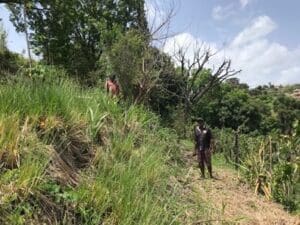
“I write about the first phase of our vetiver project with north leeward farmers which is drawing to a close. I hope to extend the work to more farmers and sites. We have built a strong group of Vetiver “Heritage” Farmers and have planted vetiver on contour in 19 farm sites involving over 30 farmers, all of them cultivating between the historical contours except the prison farm, which was newly established. I delivered the training within the context of the agricultural heritage of contour farming to maximize the sense of connection with the contour farming system …. and of course, these farmers are descendants of those who witnessed the installation of the extensive soil conservation effort of the 1920s and 30s that John Greenfield refers to in his report after his visit in the 1980s.
I am convinced that the growing awareness of this glowing example of early soil and water conservation could lead to many positive outcomes for the communities in the area- starting with the farmers. We have identified, as an agri-heritage educational site, one that has nine clear hedgerows; and the owner of the land is fully on board.
Our community education component is designed around educational tours – I had budgeted for four but they have been so popular and effective we have done eight! The project has exceeded its expectations in all areas of training, site installations and number of meters planted.
As one of the project’s closing activities, I am putting together a short booklet for students and farmers- as a simple introduction to vetiver systems and the local history, I have included TVNI’s website address to direct readers wanting to research further and find all the more in- depth technical info they may need on vetiver. I will also compile a short article on some of the historical contours that remain – I must remember to share with you both when I send the articles to the media houses here.
Meanwhile, as ours was a small grant funding, I am working to see how we can secure funding to restore more sites and to stop the degradation of the existing ones. I have enjoyed being able to gain the support of our team of farmers here who have embraced vetiver with enthusiasm, having grown up around it, but not realizing its purpose. They are poised to pass on the knowledge and practice and will be key players in any future projects that I can source funding for”.
Regenerative Agriculture with Vetiver (RAV) in Kenya
Caleb Omolo – environmentalist, farmer, community leader

“I was introduced to Vetiver grass by Elise Pinners (VNI Board member and agricultural consultant with experience in Africa and Asia) in 2009. At that time farms in Rongo (Kisii County) including my ancestral land were very degraded. I started using vetiver grass to solve the soil erosion and wind erosion. For the last 13 years I have learned so many uses of vetiver grass in soil building, and the functions of the vetiver roots and leaves that build soil organic carbon and improve soil moisture, and its role in enhancing the development of soil fungi and bacteria especially in the development of food forests.
I learned that vetiver helps to change soil biology by enhancing the dominance of fungi over bacteria under forest conditions. I also learnt that once the forest has reached maturity, the fungi start working against vetiver. I have also learned that as the vetiver is shaded out by tree growth and denser leaf canopy the mycorrhiza turn their attention from the dying vetiver to the trees, supplying them with nutrients. This interaction between vetiver and other plants, as well as trees is important, and should be a key component of regenerative agriculture. “…. the hypothesis about the key role of the AMF in the coexistence of grass and trees. Their ERM (Extra Radicle Mycelium) links are important in the below ground interaction of plants and may change the output of the interaction. We suggest that the nutrient (P) transport can be realized via ERM, and the biological significance of such nutrient transfer between species could play an important role in harsh environments where the nutrient availability is a limiting factor for plant competition ability and survival. In conclusion, the interaction between grass and studied tree species mediated by ERM represents an important mechanism of plant coexistence affected by the symbiotic relationship with mycorrhizal fungi” – Quote from: Symbiosis, 38 (2005) 261-277 Balaban, Philadelphia/Rehovot 261
Interaction between Grass and Trees Mediated by Extraradical Mycelium of Symbiotic Arbuscular
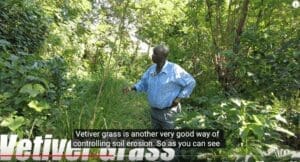
Regenerative farming is a farming system which has been practiced in many parts of the world. The Europeans and Americans learned it from Asian countries. Regenerative farming was coined by Gerome Rodale in the 30s. In Asia it is called natural farming. Many farmers in India, Japan and South Korea are practicing regenerative farming. Regenerative farming is a farming system that is cheap to implement because it uses locally available bio-degradable materials (mainly plant residues) that most farmers see as a problem, recycling them back into the soil.
Regenerative farming is able to turn bio-degradable waste into productive plant-based nutrients that in turn helps to increase crop yield, in contrast to synthetic conventional farming which has high input and lowering yields in the long term. Regenerative farming is able to maintain and often increase farm net incomes due to reduced expenses in input and labor (particularly weeding). What used to be seen as waste is, under regenerative farming, transformed into bio-complete compost, rich in plant nutrients that do no harm to the environment.
The object is to mimic nature in the way forest system works where all the elements are balanced enabling farmers multiple benefits through bio-diversity.

Plant nutrients are plentiful but mostly unavailable, especially phosphorous, as well as potassium, calcium and iron. Regenerative farming, through enhanced fungal activity, enables these nutrients to be available to plants.
The most effective plant to enable the “mining” of these minerals is vetiver grass together with other cover crops that in a regenerative system are found in early stages of forest formation. They are known as pioneer plants or cover crops.
Vetiver, working with microbes, converts, through photosynthesis, atmospheric carbon dioxide to carbohydrates, feeding mycorrhizal fungi with carbon that in return produces an enzyme that breaks the bonds of different minerals making them available to plants. As the vetiver root goes deeper, mycorrhizal fungi continue feeding the roots with the nutrients while leaves and stem feeds with carbon. The process is called photosynthesis.
We have been working with farmers using vetiver grass in all types of soil, including degraded land, and we came to the same conclusion of its ability to build soil and develop available nutrients to plants. This system is environmentally friendly and is entirely organic with no dependence on agrochemicals
In conclusion I encourage small scale marginalized farmers, such as the group I am working with in Lela, Siaya County – Kenya, to embrace regenerative farming with vetiver grass (RAV) because it is low cost and yields high returns, with minimum risk compared to conventional farming where fertilizer and other are very expensive for the average small farmer in Kenya.”
Remembering a Vetiver System pioneer in India – the late Dr. M.P. Singh
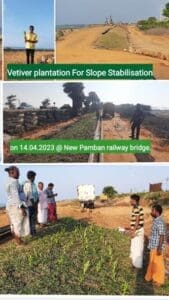 MP Singh was one of the best – inventive, committed and very practical. If he was alive today he would surely rank high in those who have contributed most to VGT in India and the world. Amongst other tasks the late MP Singh was an adviser to some communities at Rameswaram, the main island on the old land-bridge between India and Sri Lanka. A new railway bridge at Pamban is now connecting the island to the mainland and vetiver was used to stabilize the embankment as shown in these photos. Because a lot of tourists and pilgrims visit the island there are some serious pollution problems there. MP Singh recommended vetiver as part of the solution. I wonder if his advice was followed. MP Singh was a visionary. He saw many uses and applications of vetiver that could be used in India. Here are a few that are of interest, and are worth looking at again at a time when there is a renewed and growing interest in VGT.
MP Singh was one of the best – inventive, committed and very practical. If he was alive today he would surely rank high in those who have contributed most to VGT in India and the world. Amongst other tasks the late MP Singh was an adviser to some communities at Rameswaram, the main island on the old land-bridge between India and Sri Lanka. A new railway bridge at Pamban is now connecting the island to the mainland and vetiver was used to stabilize the embankment as shown in these photos. Because a lot of tourists and pilgrims visit the island there are some serious pollution problems there. MP Singh recommended vetiver as part of the solution. I wonder if his advice was followed. MP Singh was a visionary. He saw many uses and applications of vetiver that could be used in India. Here are a few that are of interest, and are worth looking at again at a time when there is a renewed and growing interest in VGT.
Evaluating and Quantifying: Carbon Sequestering, GHG Emission Reduction,Carbon Sequestering, GHG Emission Reduction, Fossil Fuel Replacement Capacity, Carbon CreditsFossil Fuel Replacement Capacity, Carbon Credits through A Community Development Project – by MP Singh and Geetika Kalha.
A Sustaianble Rural Waste management Technnique for tTransforming Villages — Geetika Kalhaa, MBA; President, Village Life Improvement Foundation. M.P. Singh B. Tech.(Civil); M.I.E. (Mech.), Earthizenz Eco-Friendly System.
𝐂𝐎𝐍𝐕𝐄𝐑𝐒𝐀𝐓𝐎𝐑𝐈𝐎𝐒

— members of the 𝐑𝐞𝐝 𝐋𝐚𝐭𝐢𝐧𝐨𝐚𝐦𝐞𝐫𝐢𝐜𝐚𝐧𝐚 𝐝𝐞𝐥 𝐕𝐞𝐭𝐢𝐯𝐞𝐫 have another way to share their experiences and answer questions. We see from the vetiver related social networks of the different countries that there are many interesting projects and initiatives in the region and these CONVERSATORIES give us the opportunity to meet to share our best practices and exchange ideas in a process of continuous improvement to the Vetiver Grass Technology.
If you want to be added to the broadcast list to receive the zoom access links, please click on the following link: https://bit.ly/3CVA8Pd If you wish to participate as a speaker, you are invited to send your name and the title of the subject matter to the following link: https://bit.ly/3D1jptO
Past Conversatorios
Antonio Carrillo Bolea (Mexico): The planning, design and execution of keyline, vetiver based, farming and conservation system for tobacco farms threatened by extreme weather events due to climate change.
Jonathan Barcant (Trinidad and Tobago): The Vetiver Education & Empowerment Project (VEEP) Model for Community Development is a comprehensive approach to community development that focuses on the use of vetiver grass to address social, economic, and environmental issues.
Claudio Rubén Daza (Colombia): Vetiver: CO2 sinks to counter Global Warming
Rafael Luque (Venezuela and Coordinator of the Latin America Vetiver Network): Vetiver System and the UN Sustainable Development Goals https://youtu.be/lkkHVMbeqCM
The 𝟓th 𝐂𝐎𝐍𝐕𝐄𝐑𝐒𝐀𝐓𝐎𝐑𝐈𝐎 𝐕𝐈𝐑𝐓𝐔𝐀𝐋 𝐋𝐀𝐓𝐈𝐍𝐎𝐀𝐌𝐄𝐑𝐈𝐂𝐀𝐍𝐎 will be held at 11 pm GMT on May 24th (Zoom)
Speaker: Dr. Oswaldo Luque Mirabal. Topic: Vetiver System Biofilter.
Note these Conversatorio (conversations) are in Spanish. You can get a few second delay audio translation by using Google Translate on your smart phone whilst simultaneously watching the speaker on Zoom on your computer.
PREVIOUS NEWSLETTERS
April 2023 March 2023 February 2023 January 2023 December 2022 November 2022
October 2022 September 2022 August 2022 July 2022 archived 1990-2002
The vast information about Vetiver at International level.. Indicated future value of Vetiver.. And protect our environment.. Regenerative.. Thank you